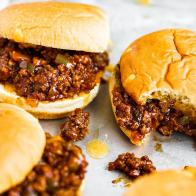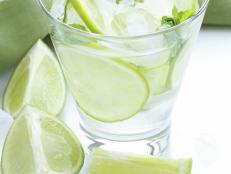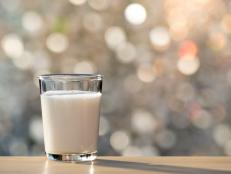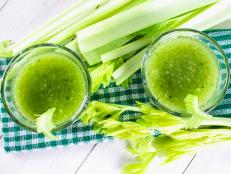Seafood May Be the Secret to Staying Healthy During Flu Season
Vitamin C is only one part of a cold and flu season healthy eating plan.
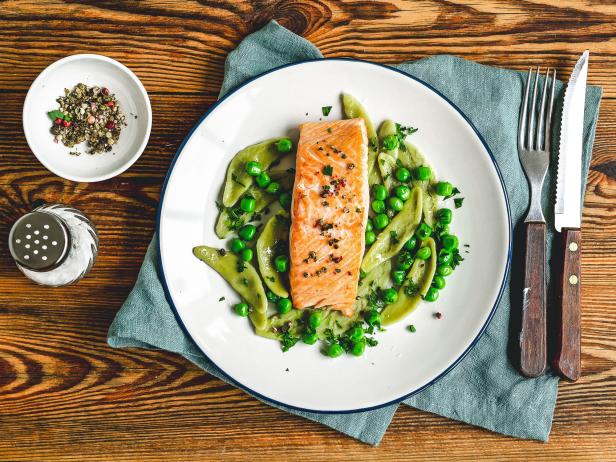
Aniko Hobel/Getty Images
Cold and flu season has descended upon us, and with it, the phrase, “You are what you eat,” takes on a whole new meaning. Everyone already knows that vitamin C plays an important role in immune health, but new research suggests omega-3 fatty acids and vitamin D may also have a significant impact in reducing the likelihood and severity of viruses like the flu and common cold. Furthermore, studies show that dietary consumption of these nutrients can help to maintain and improve immune function by combatting the associated inflammatory burden. So, what does this mean for your diet this flu season?
Fatty fish are packed with omega-3s and vitamin D, making them a powerhouse in the fight against viral infections. Fatty fish are called such because they contain more than 5% fat. The recommended dietary allowance (RDA) for vitamin D is 600 international units (IU) per day for young adults and 800 IU per day for adults older than 70. And while a daily intake of omega-3 has not been established, many health organizations recommend a minimum of 250mg to 500 mg of omega-3s per day for healthy adults. It is also recommended that adults eat at least 8 ounces or two servings of fatty fish per week for associated health benefits from vitamin D and omega-3s.
The omega-3 and vitamin D content of fish varies widely. Cold-water fatty fish, such as salmon, mackerel, tuna, herring, and sardines, contain high amounts of omega-3s and vitamin D, whereas fish with a lower fat content like bass, tilapia, and cod, as well as shellfish, contain lower levels.
Below, we compare fish based on their vitamin D and omega-3 content per 3.5 oz/100 g serving per the USDA Food Composition Database. Each fish also includes a recipe suggestion that incorporates other foods known for their immune benefits.
Sablefish/Black Cod (cod liver oil)
- Omega-3 Content: 1564 mg (625% of RDA)
- Vitamin D Content: 2,682 mg (1796 IU) per tablespoon (300% RDA)
- Get the Recipe: Baked Fresh Canadian Sablefish
Herring
- Omega-3 Content: 2,366 mg (946% of RDA)
- Vitamin D Content: 214 IU (35% of RDA)
- Get the Recipe: Pickled Herring
Anchovies
- Omega-3 Content: 2,113 mg (845% of RDA)
- Vitamin D Content: 69 IU (11% of RDA)
- Get the Recipe: Artichoke, Anchovy and Lemon Pasta
Mackerel
- Omega-3 Content: 5,134 mg (2053% of RDA)
- Vitamin D Content: 1006 IU (176% of RDA)
- Get the Recipe: Grilled Mackerel with Toasted Garlic Butter
Salmon
- Omega-3 Content: 2,260 mg (904%% of RDA)
- Vitamin D Content: 596 IU (99% of RDA)
- Get the Recipe: The Best Baked Salmon
Sardines
- Omega-3 Content: 1,480 mg (592% of RDA)
- Vitamin D Content: 240 IU (40%)
- Get the Recipe: Sardines with Parsley Oil
Tuna
- Omega-3 Content: 1600 mg (640% of RDA)
- Vitamin D Content: 82 IU (14% of RDA)
- Get the Recipe: Pan-Seared Tuna with Avocado, Soy, Ginger and Lime
White Fish
- Omega-3 Content: 1800 mg (720% of RDA)
- Vitamin D Content: 478 IU (80% of RDA)
- Get the Recipe: Grilled White Fish with Chermoula
Sea Bass
- Omega-3 Content: 859 mg (343% of RDA)
- Vitamin D Content: 226 IU (38% of RDA)
- Get the Recipe: Sea Bass alla Fiorenta
Trout
- Omega-3 Content: 600 mg (240% of RDA)
- Vitamin D Content: 635 IU (105% of RDA)
- Get the Recipe: Trout in a Pouch with Fresh Herbs and Garlic
A serving size of fish is 3.5 ounces (100 g), or about the size of a deck of cards. In order to get the most health benefits from eating fish, pay attention to how it's prepared. For example, grilling, broiling, or baking fish are healthier options than deep-frying. To really give viruses a run for their money pair fatty fish recipes with foods high in vitamin C like citrus, broccoli, brussels sprouts, and potatoes to create a delicious meal packed with immune-boosting nutrients.
It’s relatively easy to eat enough of these immune-boosting nutrients from food, but if you’re lacking, you may want to consider adding them to your diet in supplement form. A recent study concluded that sufficient vitamin D intake via supplementation can reduce physical symptoms at the onset of upper respiratory tract infection, particularly nasal symptoms (runny nose, sneezing, head congestion), and may improve the quality of life at the time of onset. Furthermore, some studies which examined the effects of fish oil supplementation found reductions in respiratory infections. Always check with your doctor or dietitian before adding dietary supplements to your diet.
Vanessa Rissetto received her MS in Marketing at NYU and completed her Dietetic Internship at Mount Sinai Hospital where she worked as a Senior Dietitian for five years. She is the co-founder of Culina Health and is certified in Adult Weight Management (Levels I & II) by the Academy of Nutrition and Dietetics, and the founder of Culina Health. Her work in private practice also includes treatment of GI disorders, bariatric surgery, weight management, PCOS, and family nutrition. She loves helping clients take an active role in their health journey, motivating them and ensuring that they always achieve success. Vanessa was named by one of the top 5 black nutritionists that will change the way you think about food by Essence magazine. Vanessa lives in Hoboken NJ with her husband, two kids and their new goldendoodle Freddie. An exercise enthusiast, she is always up for a class as long as it's after she rides her Peloton.
*This article was written and/or reviewed by an independent registered dietitian nutritionist.
Related Links:






















